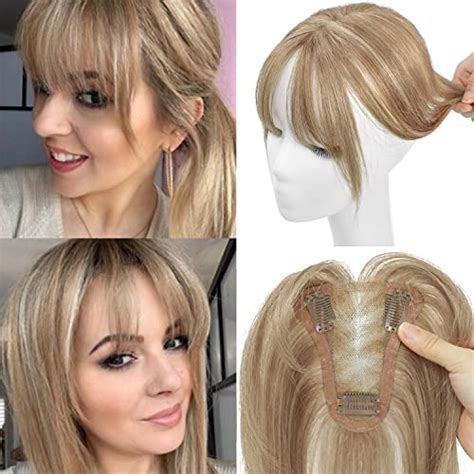Introduction
Hair toppers, also known as hairpieces or wigs, offer an effortless solution to enhance the volume, length, or style of your existing hair. Whether you’re looking to conceal thinning hair, change up your look, or simply add a touch of glamour, hair toppers provide a versatile and convenient solution.

Benefits of Hair Toppers
- Conceal Thinning Hair: Hair toppers effectively cover areas of thinning hair or bald spots, restoring fullness and confidence.
- Enhance Volume and Length: Add instant volume and length to short or fine hair, creating a fuller and more luxurious appearance.
- Change Your Style: Experiment with different hair colors, styles, and textures without the long-term commitment of a permanent color or haircut.
- Quick and Easy Application: Many hair toppers attach with clips or Velcro, making them incredibly easy to apply and remove in minutes.
Types of Hair Toppers
1. Monofilament Toppers: Feature a thin, transparent mesh base that allows for natural scalp visibility and excellent ventilation.
2. Lace Toppers: Made with a sheer lace base that blends seamlessly with your own scalp, creating an invisible and natural-looking effect.
3. Synthetic Toppers: Made from heat-resistant synthetic fibers that offer a wide range of colors and styles, but require special care to prevent matting.
4. Human Hair Toppers: Crafted from 100% human hair, providing the most natural look and feel, but require more maintenance and styling than synthetic toppers.
5. Heat-Resistant Toppers: Allow for heat styling with tools such as hair dryers and curling irons, giving you the versatility to change up your look.
Choosing the Right Hair Topper
Consider the following factors when selecting a hair topper:
- Hair Type and Texture: Match the texture and color of your natural hair for a seamless blend.
- Size and Coverage: Determine the size and coverage required to conceal thinning areas or add volume.
- Attachment Method: Choose clips, Velcro, or a combination based on your desired level of ease and security.
- Material: Consider the benefits and limitations of monofilament, lace, synthetic, and human hair toppers.
How to Apply a Hair Topper
Follow these steps to apply a hair topper:
- Prepare Your Hair: Wash and style your hair as usual. Divide it into sections and clip up the front half.
- Place the Topper: Position the hair topper on your scalp, starting from the back and gradually moving forward.
- Secure the Topper: Secure the topper using clips or Velcro, ensuring a snug but comfortable fit.
- Blend and Style: Use a gentle brush or comb to blend the topper with your own hair. Style as desired.
Troubleshooting Hair Toppers
Common issues and solutions for hair toppers:
- Topper Slips: Use mousse or hairspray at the base of your hair and on the clips to prevent slipping.
- Unnatural Appearance: Ensure the color and texture of the topper match your own hair. Consult a professional for blending and styling.
- Tangling and Matting: Brush the topper gently with a wide-toothed comb and avoid using harsh hair products.
Tips and Tricks for Hair Topper Maintenance
- Wash the topper every 1-2 weeks using a mild shampoo and conditioner.
- Use a leave-in conditioner or hairspray to prevent tangling.
- Store the topper on a mannequin or hair stand when not in use.
- Avoid sleeping with the topper on to prevent damage.
Conclusion
Hair toppers offer an innovative and versatile solution to enhance the appearance of your hair. By choosing the right type, applying it correctly, and following proper maintenance techniques, you can enjoy the benefits of a fuller, more voluminous, and stylish head of hair.
